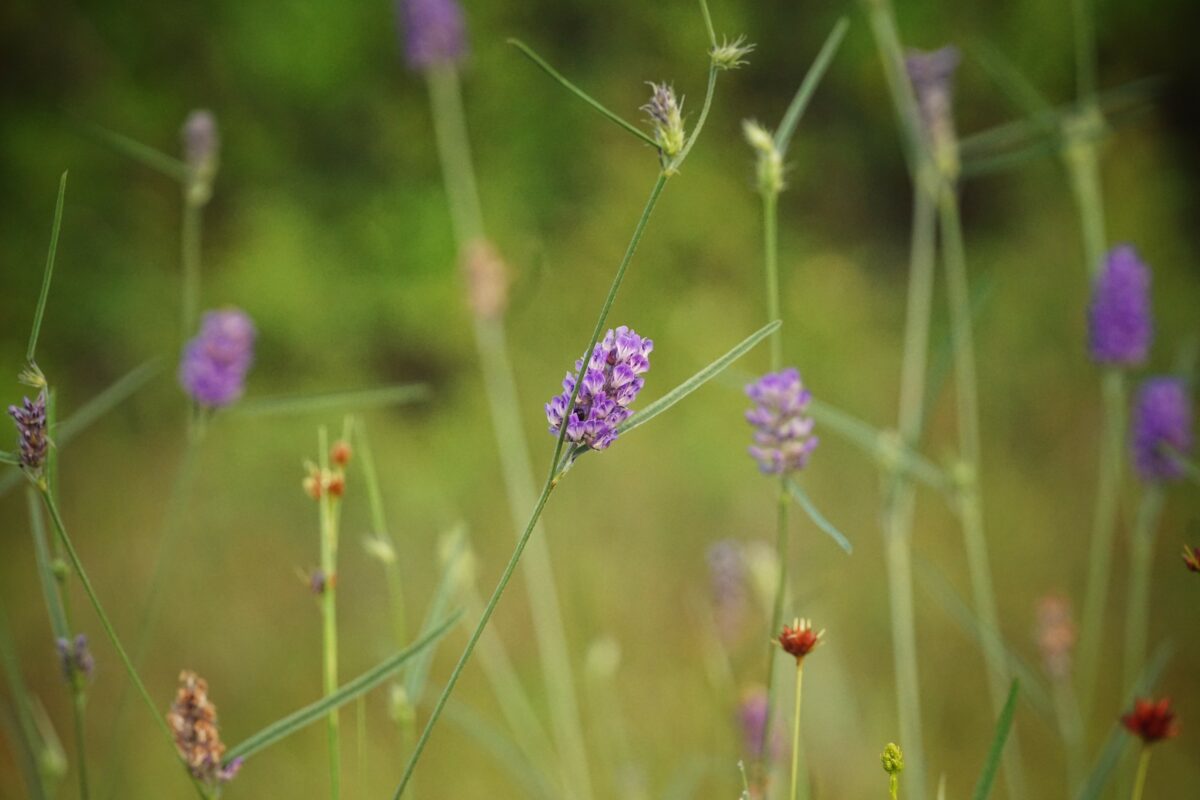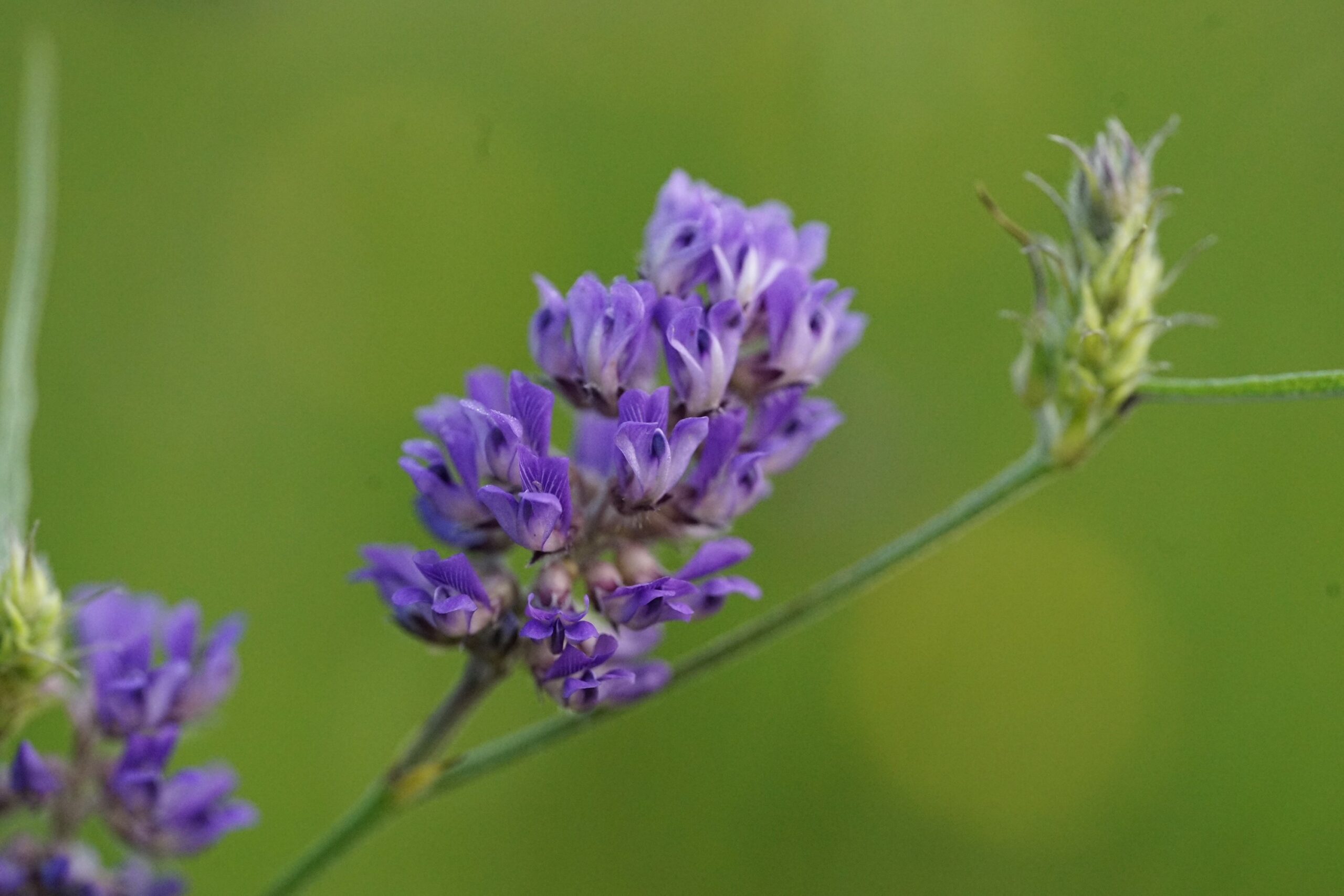Pineland leatherroot
Pictured above: Pineland leatherroot (Orbexilum virgatum) by Emily Bell. Click on terms for botanical definitions. View post as a PDF.
Pineland leatherroot is an exceptionally rare and beautiful perennial wildflower that inhabits dry to moist areas of pine savannahs. Its bright purple flowers bloom from late spring into midsummer. Little is known about its life history, but it is likely pollinated by bees, as are most flowers in the pea family, and seeds may be spread by small animals.
Compact flower clusters up to 2 inches long arise from the leaf axil. Individual flowers are less than .3 inches long and are a typical pea flower shape with an erect banner or standard petal. The leaves are simple, long and slender, tapering to a point at the tip. They have a conspicuous midvein, dark gland dots on the upper surface, and are hairy on the lower surface. Stems are slender, hairy and erect. Seeds are born singularly in small pods with a bumpy, ridged surface and a short beak.

Listed as state-endangered, Pineland leatherroot has a global status of critically imperiled due to the low number of known populations and severe development pressures within its range. Historically documented in South Carolina, Georgia and North Florida, it is now presumed extinct in South Carolina, possibly extinct in Georgia, and lost to many sites in Florida as well. In recent years, it has been documented in Clay, Duval, St. Johns and Nassau counties.
Family: Fabaceae (Legume, bean or pea family)
Native range: Northeast peninsula
To see where natural populations of Pineland leatherroot have been vouchered, visit florida.plantatlas.usf.edu.
Hardiness zone: 8-9
Lifespan: Perennial
Soil: Dry to moist, well-drained sandy or calcareous soils
Exposure: Full sun to partial shade
Growth habit: 1–2’ tall
Propagation: Seed
Pineland leatherroot is not commercially available and best enjoyed out in the wild. Visit a natural area to see it.

